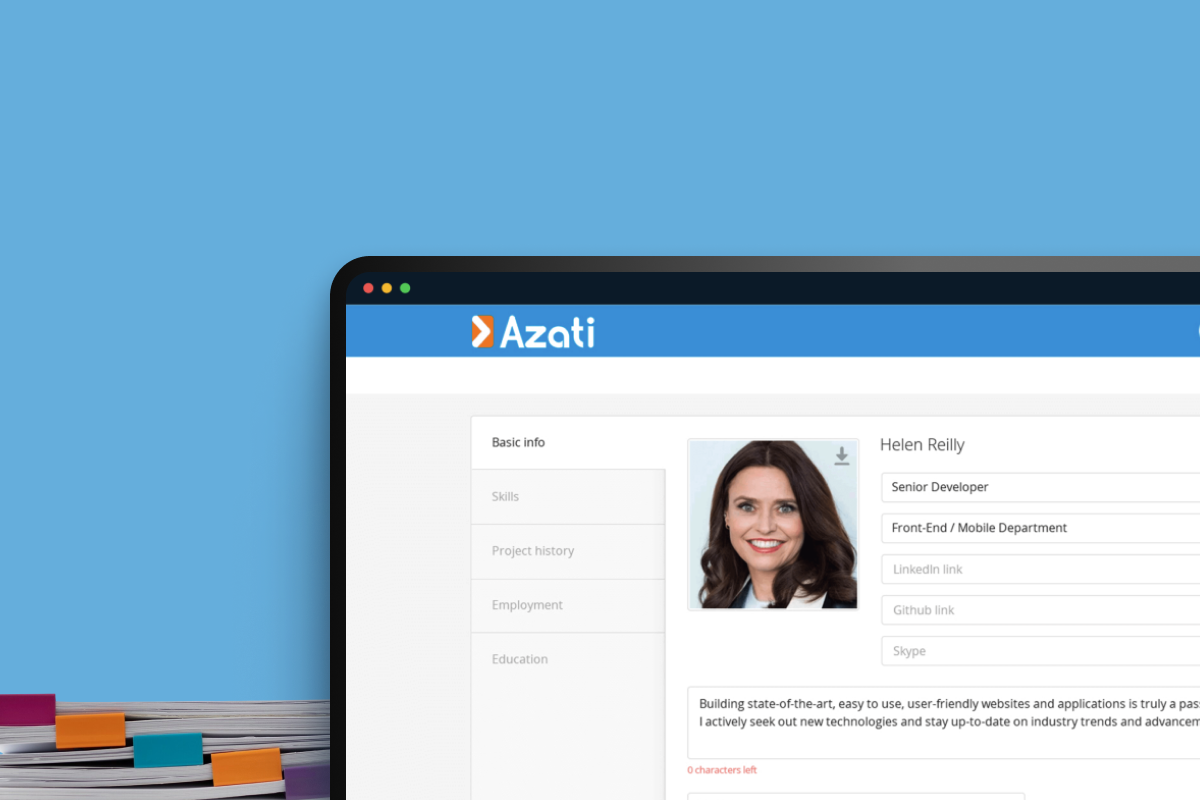All Technologies Used
Motivation
The customer needed a custom solution to automatically collect resumes from various websites, create a database, classify candidates, enhance their CVs with missing skills, and enable efficient search across the candidate database. The goal was to improve the hiring process, reducing time and costs for recruitment while ensuring high-quality matches between candidates and job descriptions.
Main Challenges
Recruiters were overwhelmed by the manual effort required to search multiple websites and databases for candidate resumes. Candidates often had incomplete or outdated profiles across different platforms, leading to missed opportunities and poor matching between candidates and job roles.
Resume data was scattered across various websites, inconsistent, and sometimes contradictory. This made it difficult for recruiters to build comprehensive candidate profiles and slowed down decision-making.
Recruiters lacked the technical knowledge to understand complex skills, programming languages, and frameworks. Identifying the right candidates for specialized roles was time-consuming and error-prone.
Many websites restricted automated scraping to prevent abuse. Ensuring continuous data collection while respecting these limitations was a significant technical challenge.
Our Approach
Want a similar solution?
Just tell us about your project and we'll get back to you with a free consultation.
Schedule a callSolution
Web Scraping Engine
- Automated scraping from multiple recruitment websites
- Proxy management and user-agent rotation to bypass limitations
- Asynchronous processing for faster data collection
- Merging of duplicate or partial resumes into a single candidate profile
Unstructured Data Analysis Module
- Normalization and structuring of raw resume data
- Merging multiple resumes for a single candidate
- Storage in scalable NoSQL databases for flexible querying
- Preparation of enriched data for machine learning and classification
Resume Classification & Skill Prediction
- Machine learning-based classification of candidate expertise
- Prediction of missing skills and competencies
- Tagging of candidates with keywords, languages, and frameworks
- Enhanced search and filtering for recruiters
Search API & Candidate Matching
- Fast, accurate candidate search with advanced filtering
- Real-time matching between job descriptions and candidates
- Support for queries using enriched, predicted, and merged data
- Integration with recruiter dashboards and front-end interfaces
Cloud-Based Architecture
- Scalable cloud-based deployment of all services
- Containerized scraping engine for faster HTML processing
- Interactive React front-end for recruiters
- Reduced maintenance costs and high system reliability
Business Value
Enhanced Recruitment Efficiency: Automated scraping, skill prediction, and candidate classification significantly reduced time and manual effort required for hiring.
Scalability and Flexibility: Cloud-based architecture and containerized services allowed the platform to scale with growing data and recruiter demand without additional infrastructure costs.
Improved Candidate Matching: Machine learning-based skill prediction and tagging increased the pool of relevant candidates by 127%, improving job fit and reducing hiring errors.
Faster Decision-Making: Average classification and tagging time per candidate decreased to ~4 seconds, allowing recruiters to make faster, more informed hiring decisions.
Data Accuracy and Reliability: The system merges partial and duplicate resumes into comprehensive profiles, ensuring recruiters have complete and accurate information.
Customer Satisfaction: The staffing agency now experiences faster, more efficient recruitment processes and views Azati as a reliable partner for future technology-driven solutions.














